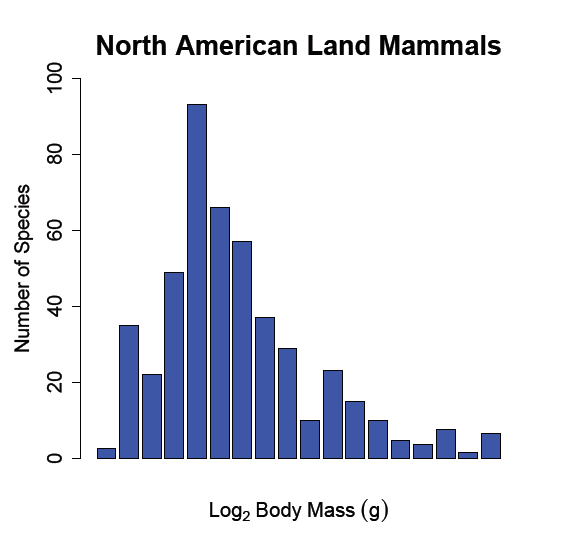Most Animals Are Small
A basic law of nature is that if your species wants to persist in the struggle for survival, it must have large populations. The reason for this is that large populations have a lower chance of going extinct, and the simplest explanation for that is that they are less likely to fall victim to local catastrophes.
Another law of nature is that if you as an individual want to increase your chances of survival, you should be large. Large animals have a lower risk of predation, may easily (actively) migrate to a place with more resources, and they have a more energy-efficient metabolism – they are able to survive longer periods of hunger. On the other hand, small species have faster growth and rate of reproduction, they can hide more easily and, perhaps most importantly, they can afford to have larger populations, since they need relatively fewer resources than the large ones.
This is explained by the energetic equivalence rule, which predicts that the amount of energy utilized by various species is independent of body size. Per plot, a single large animal eats as much as e.g. ten smaller ones, so the small ones can afford to have much higher population densities than the large ones, hence lowering their chances of extinction.
And this is where the conflict begins: should I be big for my own sake, or should I be small for the sake of my species?
Evolution doesn’t operate like that. It doesn’t think ahead, it acts in the moment. The fact is, nature is no size queen - most species are small (albeit not extremely; see graph on the right), and the reasons could be that:
A) Small species are less likely to go extinct for the reasons mentioned above, so they’ve prevailed.
B) The ancestral species was small and getting bigger is pretty complicated, so species just remained small - it’s
easier for a whale to become 10 cm longer than it is for a mouse.
C) The energetic balance in biomass production and maintenance is better in small species, except for the tiniest ones, which lose a lot of energy, so they need to specialize on highly energetic food (e.g. hummingbirds eat nectar; see my article about torpor), and since they eat a lot of it, and they need to eat often, they cannot afford to have large populations. This explains the log-normal the distribution of size among species (see graph on the right) and points at the possibility of each taxon having its optimal size, a matter I discuss in this article.

Graph adapted from Brown & Nicoletto 1991: Body mass distribution (log scale) of North American mammals ranging from 3 grams to 353 kilograms. Small animals between 50 and 100 g are the most common, whereas smaller and larger mammals are relatively rare.